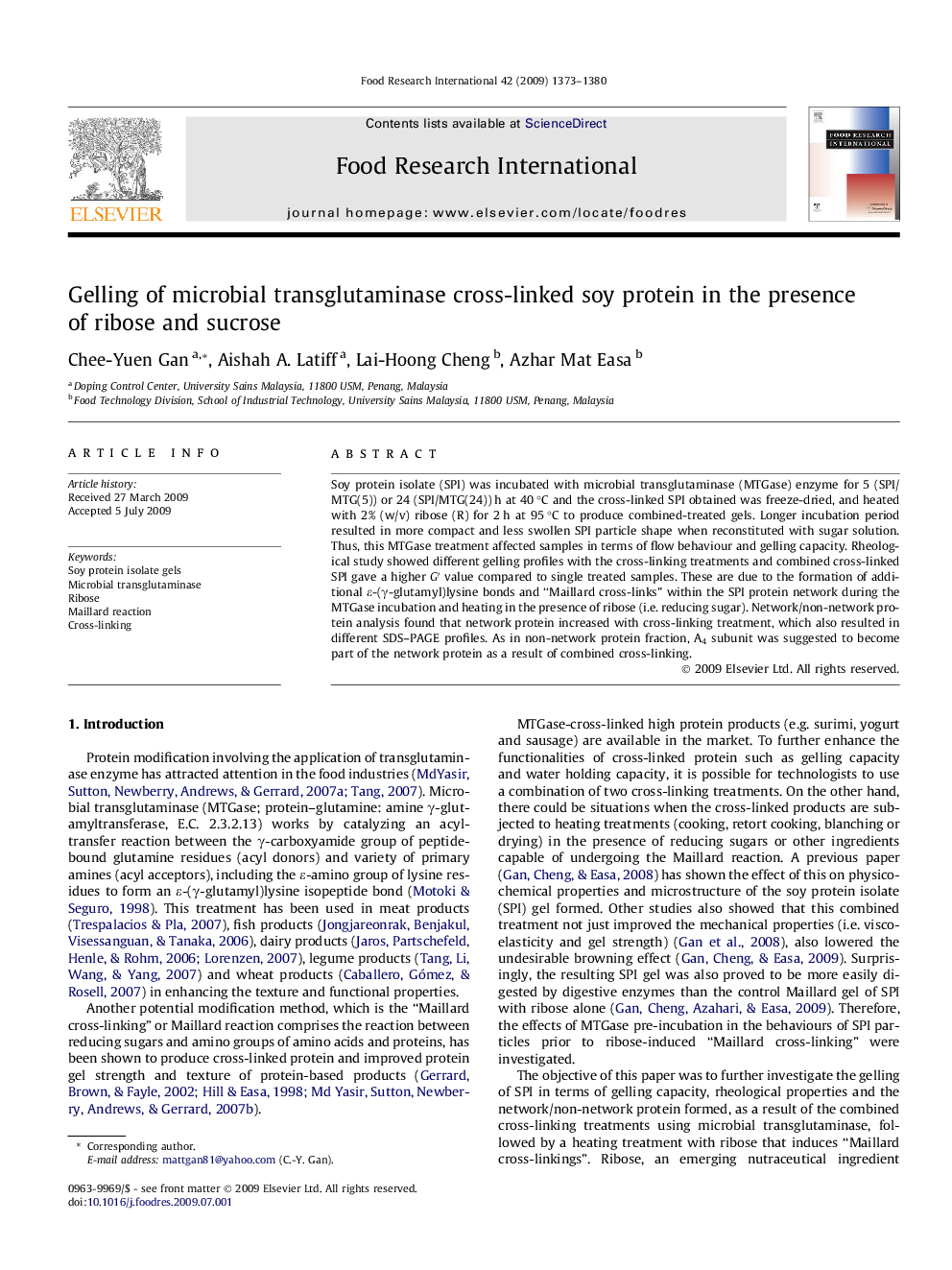| کد مقاله | کد نشریه | سال انتشار | مقاله انگلیسی | نسخه تمام متن |
|---|---|---|---|---|
| 4562310 | 1330710 | 2009 | 8 صفحه PDF | دانلود رایگان |

Soy protein isolate (SPI) was incubated with microbial transglutaminase (MTGase) enzyme for 5 (SPI/MTG(5)) or 24 (SPI/MTG(24)) h at 40 °C and the cross-linked SPI obtained was freeze-dried, and heated with 2% (w/v) ribose (R) for 2 h at 95 °C to produce combined-treated gels. Longer incubation period resulted in more compact and less swollen SPI particle shape when reconstituted with sugar solution. Thus, this MTGase treatment affected samples in terms of flow behaviour and gelling capacity. Rheological study showed different gelling profiles with the cross-linking treatments and combined cross-linked SPI gave a higher G′ value compared to single treated samples. These are due to the formation of additional ε-(γ-glutamyl)lysine bonds and “Maillard cross-links” within the SPI protein network during the MTGase incubation and heating in the presence of ribose (i.e. reducing sugar). Network/non-network protein analysis found that network protein increased with cross-linking treatment, which also resulted in different SDS–PAGE profiles. As in non-network protein fraction, A4 subunit was suggested to become part of the network protein as a result of combined cross-linking.
Journal: Food Research International - Volume 42, Issue 10, December 2009, Pages 1373–1380